
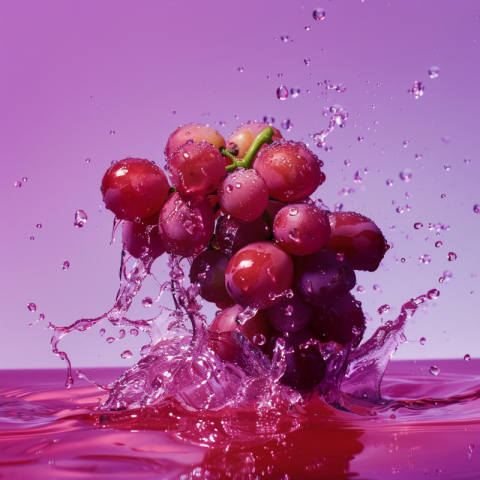

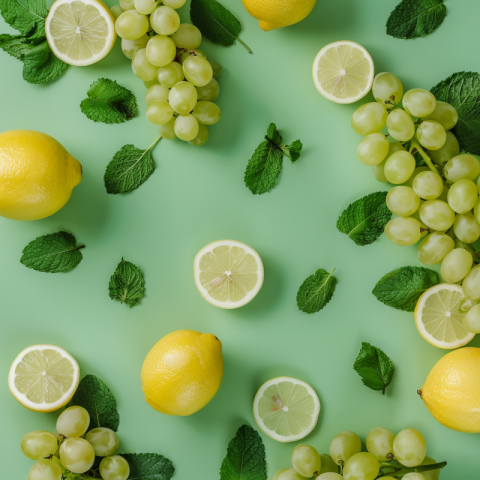
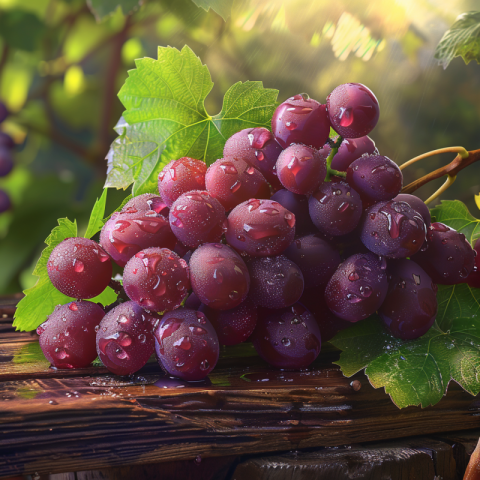
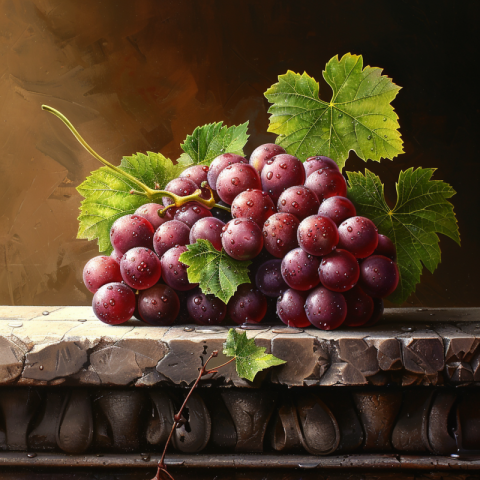


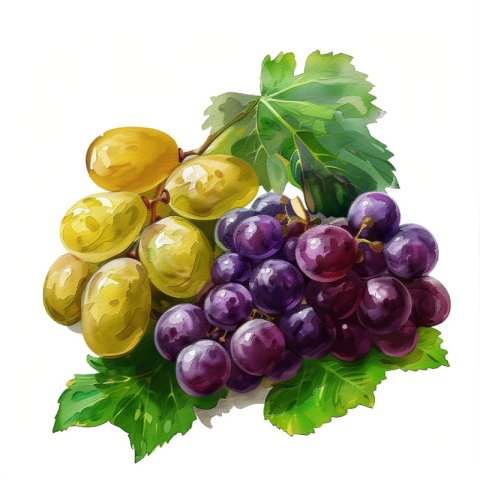
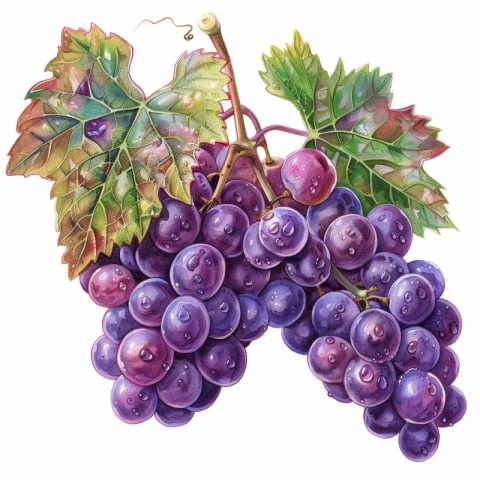
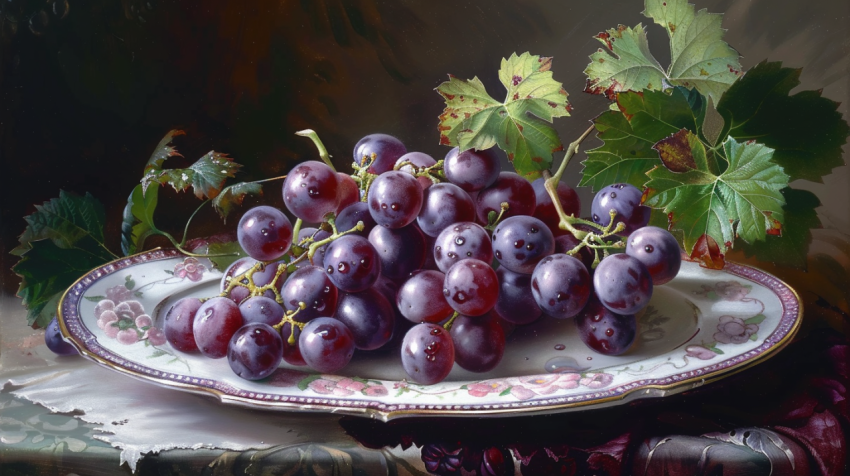
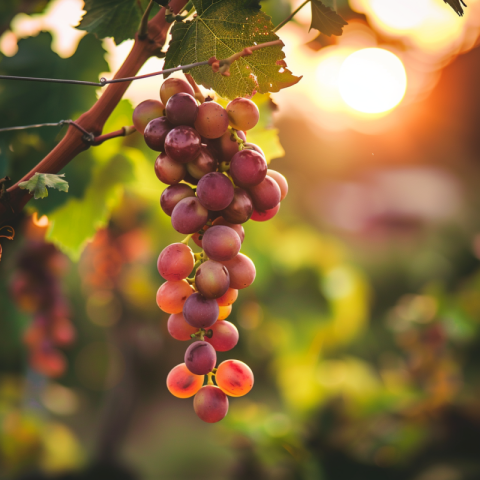
Grapes: From Vine to Wine and Beyond - A Fruit with a Storied Past
Grapes, small, juicy berries that grow in clusters on vines, are one of the world's oldest and most widely cultivated fruits. Their versatility is remarkable, as they are enjoyed fresh, dried into raisins, pressed into juice, and, most notably, fermented into wine. Grapes have played a significant role in human history, culture, and religion, and they continue to be a source of both sustenance and pleasure.
1. The Ancient History of Grapes: A Fruit of Civilization
The cultivation of grapes dates back thousands of years:
- Evidence suggests that grapes were cultivated as early as 6500 BCE in the Near East, in the region encompassing present-day Georgia, Armenia, and Azerbaijan.
- The ancient Egyptians, Greeks, and Romans all cultivated grapes and produced wine.
- Grapes and wine held important cultural and religious significance in these ancient civilizations.
- Grapes were often depicted in ancient art and mythology. For example, Dionysus was the Greek god of the grape-harvest, winemaking, and wine.
2. Grape Varieties: A World of Colors and Flavors
There are thousands of grape varieties grown around the world, each with its own unique characteristics:
- Table Grapes: Grapes that are typically eaten fresh, often seedless and with a crisp texture. Common varieties include Thompson Seedless (Sultana), Red Globe, and Flame Seedless.
- Wine Grapes: Grapes that are primarily used for winemaking, often with thicker skins, more seeds, and higher acidity than table grapes. Popular varieties include Cabernet Sauvignon, Merlot, Chardonnay, Sauvignon Blanc, and Pinot Noir.
- Juice Grapes: Grapes that are primarily used for making juice. Concord grapes are often used.
- Raisin Grapes: Certain varieties are specifically grown to be dried into raisins.
3. Wine: The Nectar of the Gods
Winemaking is one of the oldest and most celebrated uses of grapes:
- Wine is produced through the fermentation of grape juice, where yeast converts the sugars in the grapes into alcohol.
- The type of grape, the climate and soil in which it's grown (terroir), and the winemaking techniques used all contribute to the unique characteristics of a particular wine.
- Wine has played a significant role in human culture for millennia, featuring in religious ceremonies, social gatherings, and everyday meals.
4. Beyond Wine: Diverse Culinary Uses
Grapes are enjoyed in many ways beyond winemaking:
- Fresh Eating: Table grapes are a delicious and refreshing snack.
- Raisins: Dried grapes used in baking, cooking, and as a snack.
- Juice: Grape juice is a popular beverage, often consumed at breakfast.
- Jams and Jellies: Grapes can be made into jams, jellies, and other preserves.
- Vinegar: Grape juice can be fermented to produce vinegar, such as balsamic vinegar.
- Grape Seed Oil: Extracted from grape seeds, used in cooking and cosmetics.
5. Nutritional Value: A Source of Antioxidants and More
Grapes offer a range of nutritional benefits:
- Antioxidants: Grapes, particularly red grapes, are rich in antioxidants, such as resveratrol, which may help protect against chronic diseases.
- Vitamins: Grapes contain vitamin C, vitamin K, and some B vitamins.
- Minerals: They provide potassium, manganese, and smaller amounts of other minerals.
- Fiber: Grapes contain some dietary fiber, although less than some other fruits.
6. Growing Grapes: Viticulture and Terroir
The cultivation of grapes, known as viticulture, is a specialized form of agriculture:
- Grapevines thrive in temperate climates with warm, sunny summers and mild winters.
- Major grape-growing regions include France, Italy, Spain, the United States, Australia, and Chile.
- The concept of terroir, which encompasses the soil, climate, and other environmental factors that influence the character of the grapes, is particularly important in winemaking.
7. Grape Pests and Diseases: Challenges to Production
Grapevines are susceptible to various pests and diseases:
- Phylloxera: A devastating insect pest that nearly wiped out European vineyards in the 19th century. It attacks the roots of the vines.
- Powdery Mildew and Downy Mildew: Fungal diseases that can affect the leaves and fruit.
- Pierce's Disease: A bacterial disease spread by insects.
8. The Future of Grapes
- The grape and wine industries face challenges related to climate change, including changes in temperature, rainfall patterns, and the increasing frequency of extreme weather events.
- Researchers are working to develop grape varieties that are more resistant to pests, diseases, and the effects of climate change.
- There is a growing interest in sustainable and organic viticulture practices.
Conclusion:
Grapes, with their diverse varieties, rich history, and wide range of uses, are a truly remarkable fruit. From their role in ancient civilizations to their central place in the global wine industry, grapes have shaped human culture and continue to delight our palates. Whether enjoyed fresh, dried, as juice, or transformed into wine, grapes offer a delicious and nutritious way to savor the fruits of the vine. As viticulture adapts to the challenges of a changing world, the grape's enduring legacy as a symbol of abundance, celebration, and the good life is sure to continue for centuries to come.
Grapes, types of grapes, grape varieties, wine grapes, table grapes, raisins, grape juice, grape benefits, grape nutrition, red grapes, green grapes, black grapes, Concord grapes, Thompson Seedless grapes, wine, winemaking, viticulture, grapevine, grape harvest, history of grapes, growing grapes, grape diseases, grape pests, grape recipes, grape jelly, grape jam, grape seed extract, grape seed oil, health benefits of grapes, organic grapes, where to buy grapes, grape farms near me.

